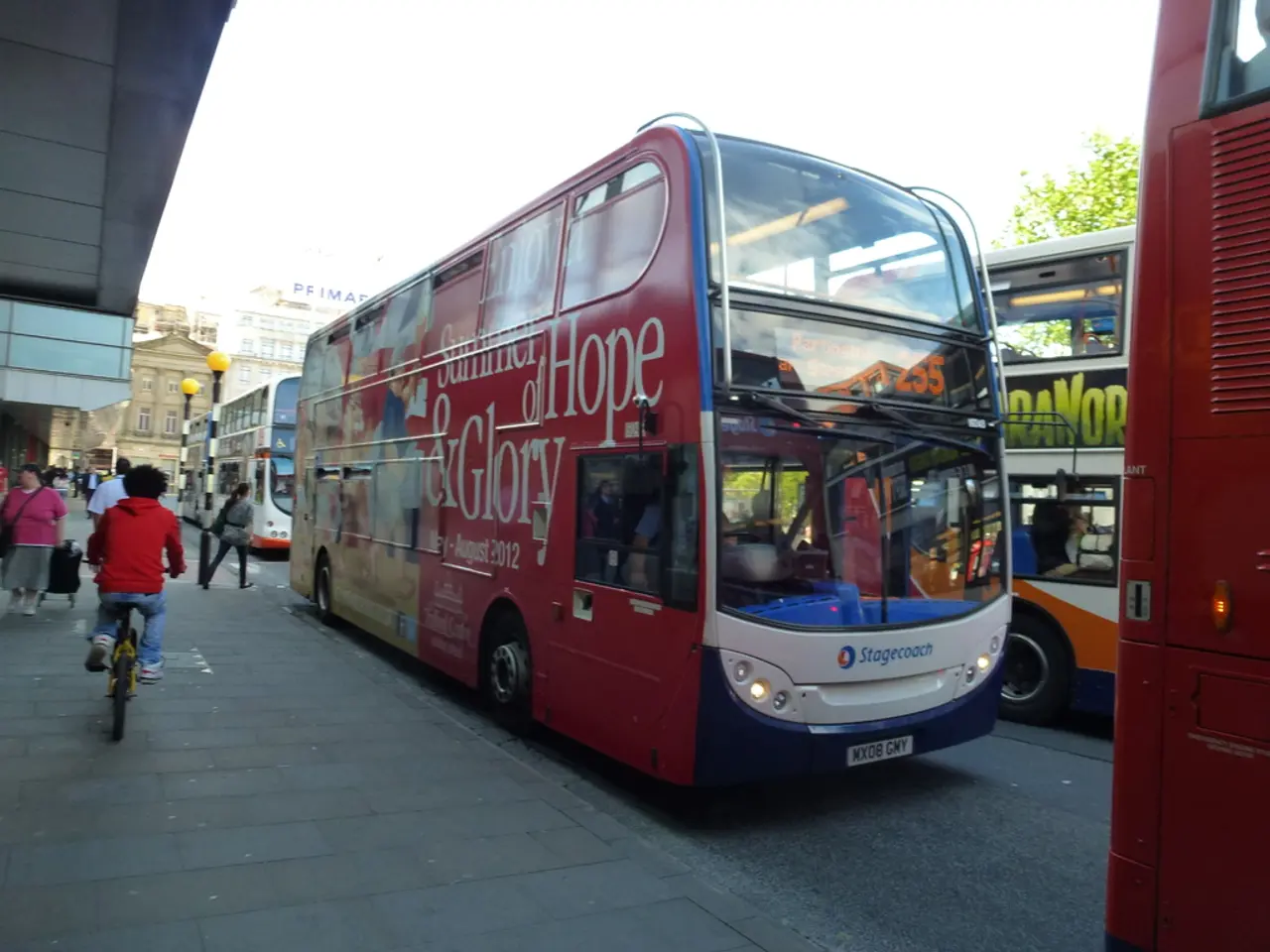A city advanced is one where the affluent utilize public transportation, according to Enrique Penalosa.
In the heart of Colombia, Bogotá underwent a remarkable metamorphosis under the leadership of Enrique Peñalosa. His urban development projects, spanning over two terms as Mayor, were characterised by a strong vision of urban equality and a focus on sustainable, people-centered urban planning.
Peñalosa's vision was rooted in the belief that cities should prioritise the needs of pedestrians, cyclists, and public transit users over private car owners. This approach aimed to create a more inclusive city where lower-income residents could access opportunities more easily.
A key aspect of this vision was the promotion of urban equality. By devoting a lane to TransMilenio buses only, Peñalosa ensured that the number of passengers, not their wealth, was prioritised. This commitment to equitable access to city benefits was a cornerstone of his vision.
Another crucial aspect was transforming public transit. Peñalosa championed Bogotá’s TransMilenio bus rapid transit system, a cost-effective, high-capacity transit solution that significantly improved mobility. This system became a model for similar mass transit projects in other Latin American cities.
Expanding green public spaces was another priority for Peñalosa. He advocated for parks and pedestrian zones, believing that accessible public spaces are essential for social interaction and well-being.
Limiting car dependency was also a key focus. Peñalosa's policies aimed to reduce car traffic congestion and pollution, fostering walkability and cycling infrastructure.
The impact of these projects was profound. Bogotá gained global recognition as a leader in innovative, sustainable urban development, with measurable improvements in public transit efficiency and urban livability. Peñalosa's ideas have influenced urban planning beyond Colombia, emphasising that sustainable transport and equitable city design can coexist and benefit all social groups.
Despite facing significant opposition during his first term, including a Director of Public Space who stated that "the people don't want public space," Peñalosa ended his first term with the highest approval rating of any Mayor in Bogotá's history.
In summary, Peñalosa's urban development vision was grounded in transforming Bogotá into a more equal, sustainable, and livable city by reorienting urban infrastructure to prioritise people rather than cars. This approach has had lasting influence on urban planning both within Bogotá and internationally.
References:
[1] Enrique Peñalosa, "The City of Human Needs," TED Talks, 2007.
[5] Enrique Peñalosa, "The Future of Cities," TED Talks, 2016.
Peñalosa's transformation of Bogotá extended beyond urban planning to influence other sectors, such as lifestyle and home-and-garden. He advocated for spaces that promote community bonding and personal well-being, fostering a city where residents can truly thrive.
The political impact of Peñalosa's approach transcends city boundaries, offering a model for general-news broadcasters to discuss urban issues from a people-centered perspective, emphasizing the importance of sustainable, equitable development worldwide.




